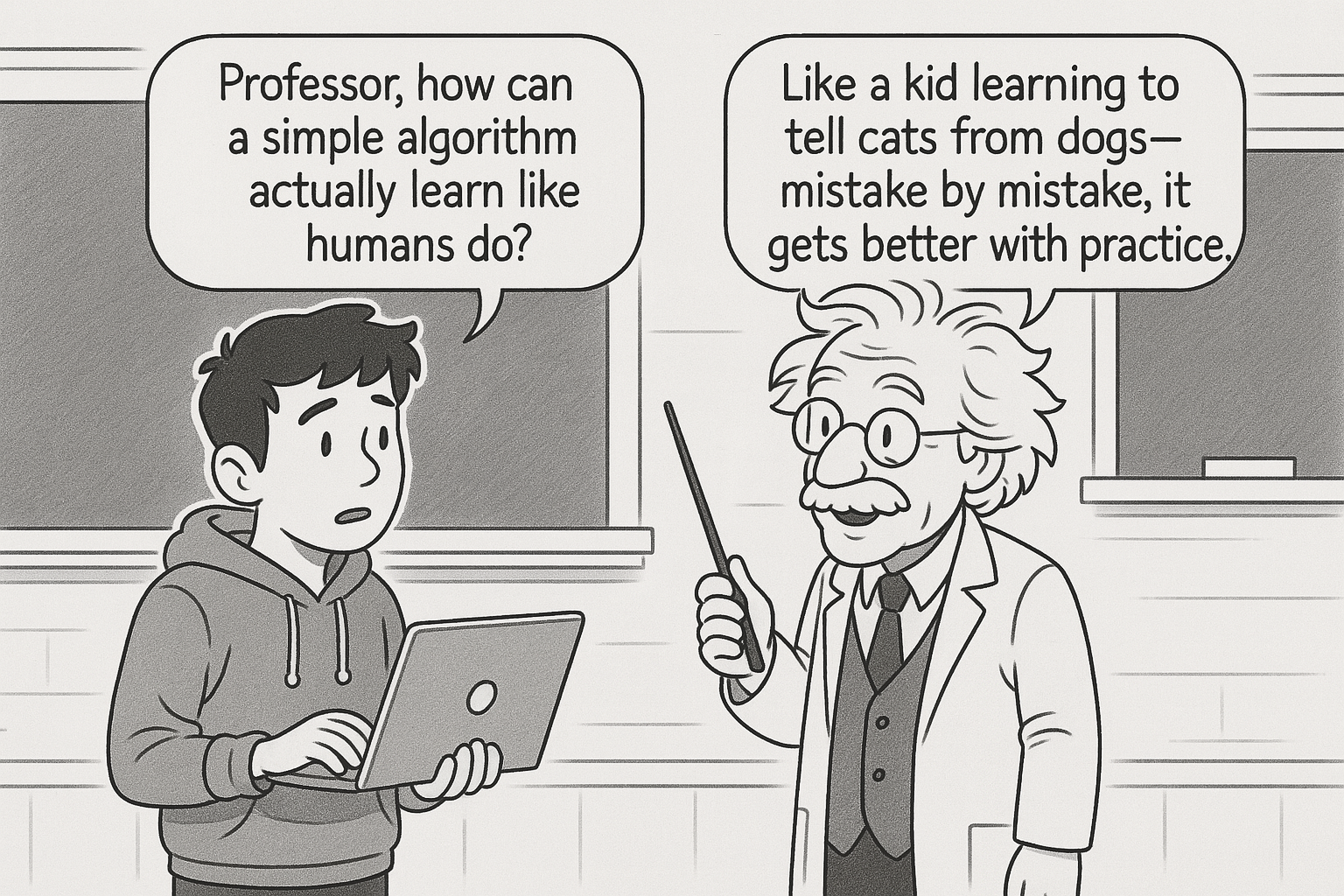Introduction
In 1958, psychologist Frank Rosenblatt at Cornell Aeronautical Laboratory published "The Perceptron: A Probabilistic Model for Information Storage and Organization in The Brain" in Psychological Review. This work introduced the world's first learning algorithm for artificial neural networks, demonstrating that machines could actually learn from experience rather than being explicitly programmed. Rosenblatt's perceptron became the foundation of machine learning and sparked the modern artificial intelligence revolution that powers everything from image recognition to natural language processing in today's applications.
"The first machine that learns from mistakes paved the way for artificial intelligence to match human learning."
Core Ideas
Rosenblatt's perceptron was essentially an enhanced version of the McCulloch-Pitts neuron with one crucial addition - the ability to learn. While McCulloch and Pitts had shown that networks of artificial neurons could perform logical operations, their weights had to be set manually. Rosenblatt's breakthrough was creating an algorithm that could automatically adjust these weights based on training examples.
The perceptron consisted of three types of units: sensory units (S-units) that received input, association units (A-units) that performed weighted summation with random connections, and response units (R-units) that produced the final output. The magic happened in the connections between A-units and R-units, where weights could be adjusted through learning.
The learning rule was elegantly simple: when the perceptron made a correct prediction, nothing changed. When it made a mistake, the weights were adjusted in proportion to the error. If the perceptron should have fired but didn't, the weights of active inputs were increased. If it fired when it shouldn't have, those weights were decreased. This iterative process continued until the perceptron learned to classify the training examples correctly.
Rosenblatt proved a fundamental theorem about perceptron convergence: if a perfect solution existed (meaning the data was linearly separable), his algorithm was guaranteed to find it in finite time. This was the first mathematical proof that a machine learning algorithm would definitely succeed under certain conditions.
Breaking Down the Key Concepts
Think of the perceptron as a digital voting system where each input feature gets a vote with different weights. For example, when deciding whether an email is spam, the perceptron might give high positive weight to "urgent action required" and high negative weight to "from known contact." The algorithm calculates the total weighted score and makes a binary decision based on whether this score crosses a threshold.
The learning process works like adjusting the voting weights based on mistakes. When the perceptron incorrectly classifies a legitimate email as spam, it reduces the weights of features that were present in that email. When it fails to catch actual spam, it increases the weights of features found in that spam message.
Rosenblatt's insight was that you didn't need to manually figure out these optimal weights - the algorithm could discover them automatically through repeated exposure to examples. This was revolutionary because it meant computers could improve their performance through experience, much like human learning.

Results and Significance
In July 1958, the U.S. Office of Naval Research demonstrated Rosenblatt's perceptron running on an IBM 704 computer. After just 50 training trials, the machine successfully learned to distinguish punch cards marked on the left from those marked on the right. This was the first public demonstration of machine learning, causing newspaper headlines to declare it "the first machine capable of having an original idea."
Rosenblatt later built the Mark I Perceptron, a custom hardware implementation that could perform visual pattern recognition. The machine could learn to recognise simple geometric shapes and even achieved some success in character recognition tasks. This demonstrated that the learning principle worked not just in simulation but in real hardware applications.
For developers working with today's machine learning frameworks like TensorFlow and PyTorch, the perceptron represents the conceptual foundation of everything we do. Every gradient descent algorithm, every neural network training procedure, and every deep learning model traces its lineage back to Rosenblatt's simple weight update rule. The perceptron learning algorithm is essentially the ancestor of backpropagation and all modern optimisation techniques.
The perceptron's significance extends beyond technical achievements. It introduced the paradigm shift from programming computers to do specific tasks to training them to learn tasks from data. This conceptual breakthrough launched the entire field of machine learning and established the foundation for modern artificial intelligence research.
Original paper can be found here - https://psycnet.apa.org/record/1959-09865-001